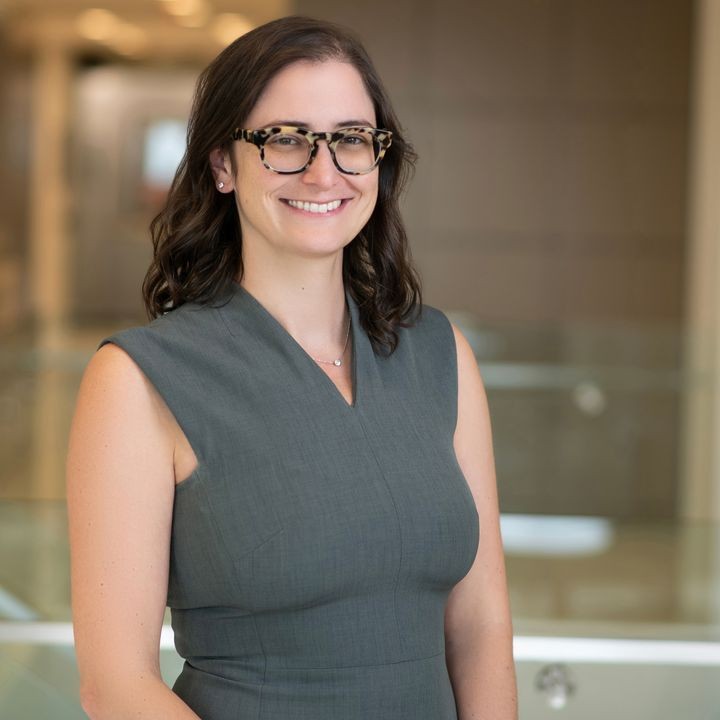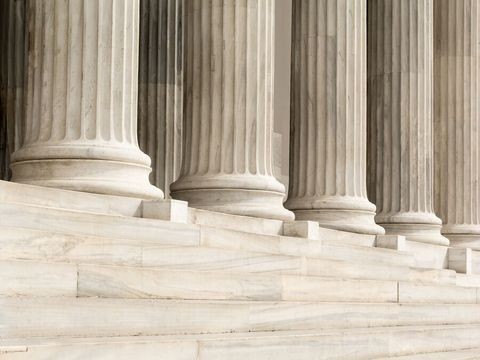SBA OIG Flags Areas of Concern with SBA’s Loan Forgiveness Process in Recent Report
Client Alert | 4 min read | 03.01.22
On February 28, 2022, the Small Business Administration’s (SBA) Office of Inspector General (OIG) issued a report regarding the SBA’s Paycheck Protection Program (PPP) loan forgiveness process.
SBA’s Process for Reviewing Loan Forgiveness Applications
The OIG spelled out in detail how SBA initially undertook to review forgiveness applications:
- SBA used an automated tool to screen for issues of potential noncompliance with program requirements, which resulted in flagged loans being assigned hold codes to be considered for manual review.
- SBA used data analytics for the resolution and reclassification of loans that did not need a manual review. For example, loans of $150,000 or less that did not have an excessive number of hold codes, or hold codes related to fraud would be reclassified.
- For loans with unresolved hold codes, such as a borrower’s criminal record or business affiliation issues, SBA’s contractors manually reviewed using the loan data, research, and requests for documentation.
- If the SBA contractors’ manual review marked a loan forgiveness application as “requiring further action,” SBA would conduct an additional manual review. In addition to loans with unresolved hold codes, SBA was also initially manually reviewing all loans of $2 million or greater as well as a statistically valid sample of loans. SBA developed a three-level tiered manual review system.
How this initial process played out by the numbers is as follows:
- SBA screened all 5.2 million PPP loans disbursed in 2020 through its automated tool. This resulted in 1.96 million loans being flagged with a hold code.
- SBA resolved about 1.7 million of the 1.96 million loans without performing a manual review.
- As of May 12, 2021, more than 99% of forgiven loans were exclusively based on an automated review.
But, as many are aware, the loan forgiveness review process did not move speedily for loans of $2 million or greater. This was seemingly caused by a number of interrelated issues. SBA’s initial decision that SBA would manually review all loans of $2 million or greater was obviously a factor. Additionally, SBA did not finalize its Master Loan Review Plan until October 2, 2020 (and so SBA only began manually reviewing forgiveness decisions necessitating a review). Similarly, SBA and Treasury did not finalize an eligibility and forgiveness review checklist for loans of $2 million or greater until January 2021 (and so SBA only began performing manual reviews of loans $2 million or greater on January 20, 2021).
Then, in June 2021, SBA revised its loan review process in the following ways:
- SBA’s new process for loan reviews prioritizes reviews based on fraud risk rather than forgiveness status.
- SBA ended its a manual review of all loans of $2 million or greater. Instead, SBA will review all loans of $2 million and greater with unresolved hold codes and a statistically valid sample of loans $2 million and greater. This was in part driven by the fact that SBA was not meeting the 90-day statutory requirement to remit forgiveness payments.
OIG Areas of On-Going Concern
The SBA OIG noted a number of concerns including the following:
First, the OIG has questions about how SBA will recover on potentially fraudulent or ineligible loans after SBA has forgiven these loans. The OIG report notes that “in certain instances, [SBA] will retroactively manually review loans for fraud and ineligibility after they have been forgiven.” The OIG highlights how when the PPP launched in 2020, “SBA’s fraud risk management approach for PPP loans was intentionally developed with more fraud and eligibility controls in the loan forgiveness phase rather than the initial application stage.” The OIG’s report does not make clear what criteria SBA will use to determine which loans of $2 million or greater that did not receive a manual review before forgiveness will be selected for a “retroactive manual review.”
Second, the OIG expressed concern over the fact that not all borrowers sought forgiveness of their PPP loan. Per the OIG, “[w]e believe that a portion of these loans were obtained by fraudulent applicants who are less likely to submit a forgiveness application because they have already obtained the funds with no intentions to use them appropriately or repay the loan.” As a result, the OIG recommends that SBA “[c]ontinue to closely monitor loans for which forgiveness applications have not yet been submitted.”
Third, based on changes in eligibility and the types of institutions issuing PPP loans in 2021, the OIG expressed concern about the 2021 PPP loans. The OIG noted that many lenders issuing 2021 PPP loans, particularly Schedule C loans, relied exclusively on third-party loan processing or software platform vendors they hire to complete loan processes. The OIG predicts that “these lenders and their reliance on third-party vendors will present SBA with several challenges moving forward” and as part of the loan forgiveness process, the OIG recommends that SBA “focus targeted efforts on these types of loans and review appropriate documentation to ensure these smaller loans were made to eligible businesses and minimize the losses associated with forgiveness of fraudulent loans.”
Of potential interest, the report indicated SBA did complete some loan reviews for files that contained completed loan necessity questionnaires, SBA Forms 3509 and 3510. (As we previously covered, in late July 2021, SBA indicated it would no longer use these forms.) The OIG report indicates that in such cases SBA “found most borrowers met the good faith requirement.” (The report does not indicate whether SBA denied loan forgiveness and/or deemed a borrower ineligible for an initial loan because of a SBA determination that the borrower had not met the good faith requirement.)
Crowell will continue to monitor and report on developments regarding the Paycheck Protection Program.
Contacts
Insights
Client Alert | 5 min read | 12.12.25
Eleventh Circuit Hears Argument on False Claims Act Qui Tam Constitutionality
On the morning of December 12, 2025, the Eleventh Circuit heard argument in United States ex rel. Zafirov v. Florida Medical Associates, LLC, et al., No. 24-13581 (11th Cir. 2025). This case concerns the constitutionality of the False Claims Act (FCA) qui tam provisions and a groundbreaking September 2024 opinion in which the United States District Court for the Middle District of Florida held that the FCA’s qui tam provisions were unconstitutional under Article II. See United States ex rel. Zafirov v. Fla. Med. Assocs., LLC, 751 F. Supp. 3d 1293 (M.D. Fla. 2024). That decision, penned by District Judge Kathryn Kimball Mizelle, was the first success story for a legal theory that has been gaining steam ever since Justices Thomas, Barrett, and Kavanaugh indicated they would be willing to consider arguments about the constitutionality of the qui tam provisions in U.S. ex rel. Polansky v. Exec. Health Res., 599 U.S. 419 (2023). In her opinion, Judge Mizelle held (1) qui tam relators are officers of the U.S. who must be appointed under the Appointments Clause; and (2) historical practice treating qui tam and similar relators as less than “officers” for constitutional purposes was not enough to save the qui tam provisions from the fundamental Article II infirmity the court identified. That ruling was appealed and, after full briefing, including by the government and a bevy of amici, the litigants stepped up to the plate this morning for oral argument.
Client Alert | 8 min read | 12.11.25
Director Squires Revamps the Workings of the U.S. Patent Office
Client Alert | 8 min read | 12.10.25
Creativity You Can Use: CJEU Clarifies Copyright for Applied Art
Client Alert | 4 min read | 12.10.25
Federal Court Strikes Down Interior Order Suspending Wind Energy Development




